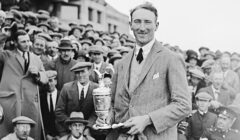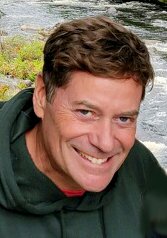The History of The Open Championship at Royal Troon
1923 was the first year that the Old Course at Royal Troon hosted The Open Championship. Since then, the competition has returned eight different times to do battle.
From Bobby Locke’s defense in 1950 to Tom Watson’s dramatic triumph in 1982 through Henrik Stenson’s masterful achievement in 2016, Royal Troon has certainly staged some of the greatest moments in the history of The Open Championship.
Royal Troon’s Old Course was founded in 1878, expanded to 18 holes 10 years later and re-designed by five-time Champion Golfer James Braid ahead of its first Open in 1923. It will host its 10th Open in 2024. Designed in the traditional out-and-back manner of the Old Course at St Andrews, Troon’s test begins with a gentle opening through some of the most striking links land to be found at any of the Open venues and concludes with a back nine as tough as any finish in the world. Troon most recently staged the Championship in 2016, when Henrik Stenson prevailed in a stunning duel with Phil Mickelson, but we wanted to take a trip down memory lane and re-visit all past Open championships conducted at Royal Troon.
2016–Henrik Stenson
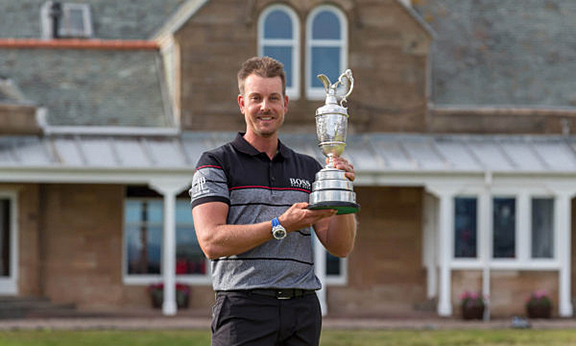
Henrik Stenson
America’s dominance at Royal Troon finally came to an end in 2016 – but only thanks to one of the great Open Championship rounds from Henrik Stenson.
Sunday quickly became a two-horse race – Royal Troon’s very own version of Turnberry’s famous 1977 Duel in the Sun.
While the rest of the field struggled to cope with the squally conditions, Stenson compiled a quite astonishing 63 to Mickelson’s scarcely less remarkable 65. Stenson’s round began with a bogey and included 10 birdies – by contrast Mickelson’s bogey-free 65, featuring four birdies and an eagle, looked almost mundane.
With five holes to play, they were tied for the lead. Stenson birdied four of them and parred the other. Mickelson played the same stretch in one under par, which would have been enough in the circumstances to win many Opens – but not here.
Stenson’s ball-striking, especially his long and mid-iron play, was simply peerless and he won by three.
2004–Todd Hamilton
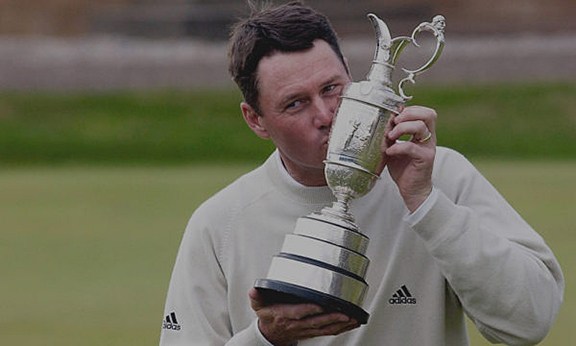
Todd Hamilton
The sixth-successive American champion at Royal Troon, and in truth the least heralded winner here since Arthur Havers some 81 years earlier, was Todd Hamilton. The experienced American, who had spent much of his early career playing in Japan and various mini-tours, finally won a PGA Tour card for the first time in 2003.
A second-successive 67 took Hamilton to the top of the leaderboard on Saturday night – but few thought he would still be there 24 hours later given the talent queuing up behind. Els, Retief Goosen, Levet, Phil Mickelson, Tiger Woods, Montgomerie and Mike Weir were all within five shots.
But while Mickelson finally showed the Open crowds his true talent, finishing just a shot adrift in third, it was left to Ernie Els and Hamilton to contest another Troon play-off.
In the play-off, Hamilton was steadiness personified, repeatedly using his hybrid to great effect, both from the tee and to play chip-and-run shots with. Four successive pars were enough to leave the American a shot clear, with Els’ dropped shot at the short 17th the pivotal moment.
1997–Justin Leonard
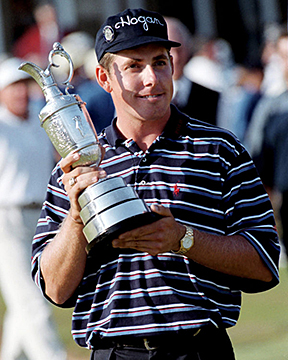
Justin Leonard
There was to be yet more American success at Royal Troon in 1997, when Justin Leonard eventually overcame the home favorite, Darren Clarke, and Sweden’s Jesper Parnevik in the final round.
Playing in his first Open as a professional, the reigning Masters’ champion Tiger Woods was very much the center of attention throughout the week. He was on the fringes of contention but closed with a 74 to finish 12 shots adrift of Justin Leonard and left to rue a series of high scores at individual holes – a triple-bogey seven in the first round, a quadruple-bogey eight in the second round and a triple-bogey six at the Postage Stamp in the fourth round.
Heading into the final day, Parnevik was two strokes clear of Clarke and five of Leonard. The Swede led until late on, when he bogeyed two of the last three holes as Leonard accelerated in the other direction.
Neither of the Europeans could break par, which places Leonard’s stunning, closing 65 into context. He won by three.
1989–Mark Calcavecchia
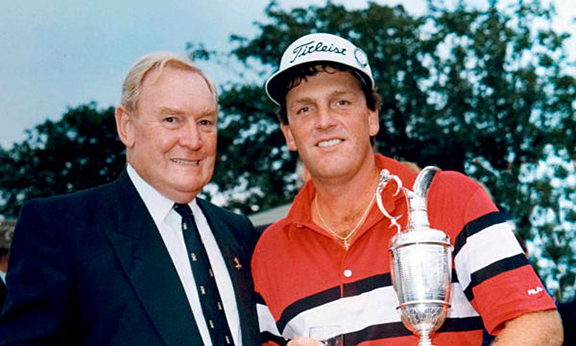
Mark Calcavecchia
Seven years later, it was left to a pair of Australians and an American to decide who would win the first-ever four-hole play-off to be used in the Open Championship.
Ahead of the final round, Wayne Grady led by one from Tom Watson but ahead of them the picture was changing. Greg Norman began the final round with six successive birdies in a trademark charge. His closing 64 was not quite good enough to beat Mark Calcavecchia and Grady, with the latter left to rue a costly bogey at the short 17th.
In the play-off, Norman began with two birdies – one clear of Calcavecchia. He made bogey at the 17th leaving the two men tied. After Calcavecchia had found the rough, Norman unleashed a drive that reached a bunker he considered out of play. The American hit the shot of his life with a 5-iron to seven feet while Norman was only able to hit from one bunker to another.
Calcavecchia was the champion and he said afterwards: “I will remember Royal Troon in 1989 as the place and the time when the course, the weather and my game all came together for one glorious week.”
1982 – Tom Watson
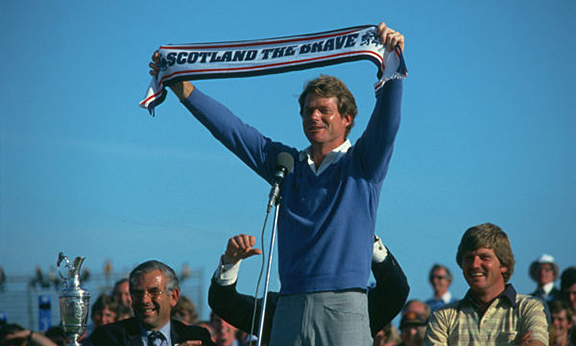
Tom Watson
By the time the Open next returned the club had celebrated its centenary and with it came a change of status. The players duly arrived at Royal Troon in 1982. The hot favorite, inevitably, was Tom Watson, already a three-time Open champion in 1975, 1977 and 1980, at Carnoustie, Turnberry and Muirfield respectively.
As Jack Nicklaus and Tony Jacklin both played themselves out of contention with opening rounds of 77 the young American Bobby Clampett carded a scintillating 67 to take the lead. A flash in the pan surely – and yet he followed by going one better with a 66. That was good enough to take the halfway lead by seven strokes.
In the last round, Clampett played the opening three holes in three over par and was never a serious contender thereafter. Sadly, he closed with a 77.
That left Nick Price in apparent control, leading by two shots with six to play. Two bogeys and a double in the next five holes changed all that leaving Watson to conclude: “I didn’t win the Open. Nick Price gave it to me.”
1973 – Tom Weiskopf
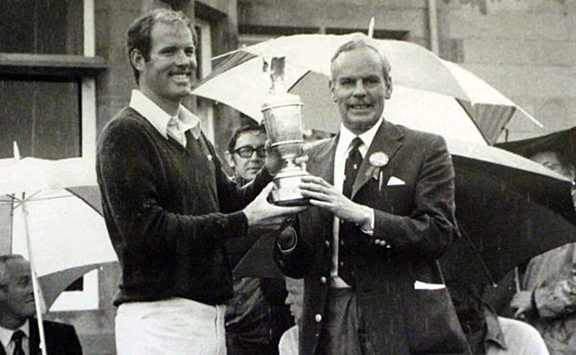
Tom Weiskopf
In 1973, the Open returned to Troon. Tom Weiskopf was the champion, in what would prove to be the tall, elegant American’s only major success.
Amid wet and windy conditions throughout the week, Weiskopf led from the start, a 68 taking him a shot clear of Jack Nicklaus and two ahead of the flamboyant Johnny Miller.
Miller tried harder than anyone to keep pace with his compatriot but Weiskopf was never quite caught. When Nicklaus slumped to a third-round 76, Weiskopf’s position was made even stronger.
1962 – Arnold Palmer
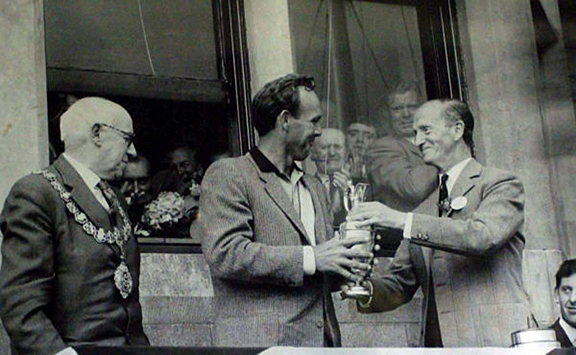
Arnold Palmer
By 1962, Arnold Palmer was in the process of single-handedly reinvigorating the Open Championship. It was his presence at the tournament that set an example to his American peers and it is not overstating the case to suggest that the Open would not be the sporting institution that it is today without the Pennsylvanian’s immense contribution in the 1960s.
Palmer was at his absolute peak as a golfer saying afterwards: “I have never, I mean never, played better golf.” Already two strokes clear at the halfway stage, over a baked and scorched Troon links, Palmer simply scattered the field with a third round of 67 with none of his challengers able to break 70.
Cruising home with a closing 69 meant that he beat the Australian Nagle by six strokes with Rodgers and Brian Huggett a further seven adrift in third place.
1950–Bobby Locke
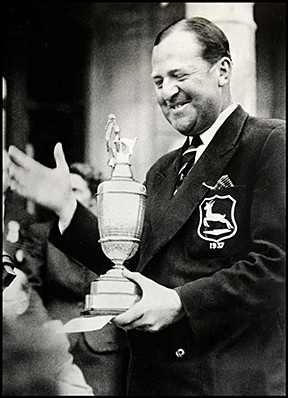
Bobby Locke
It would be after the Second World War when the Open finally returned to Troon and it was a time when the leading Americans were staying at home. In 1950, the contenders were largely homegrown. This was an era dominated by the likes of Peter Thomson, Gary Player and, of course, Bobby Locke.
The great South African arrived in Ayrshire as the defending champion, having won at Royal St. George’s the year before and duly added a second Claret Jug to his collection. His steady, deliberate skillful play over the two rounds played on the final day resulted in a total of 279 – that was two better than Roberto De Vicenzo with Ireland’s Fred Daly and Wales Dai Rees leading the home challenge.
1923–Arthur Havers
In 1923, the Open Championship came to Troon for the first time. The Great Triumvirate of Harry Vardon, James Braid and JH Taylor were in attendance, and between them they had lifted the Claret Jug on 16 occasions, albeit all of them before World War One.
But it was the tall, schoolmasterly Englishman, Arthur Havers, who would come out on top at Troon. Ungainly, unheralded and unfancied, his total of 295 proved enough to beat Hagen by a stroke with Smith in third.
History will once again be written around the South Ayrshire links this July, as golf’s greatest players will all compete for the chance to be called ‘Champion Golfer of the Year.’
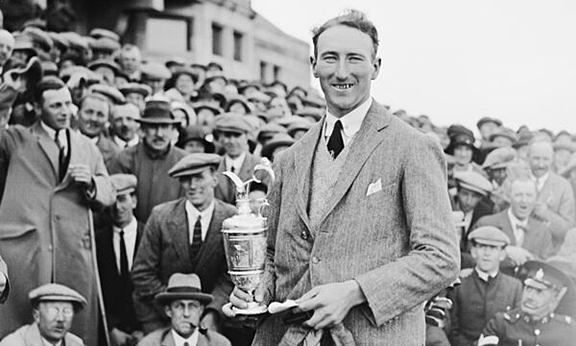
Arthur Havers

